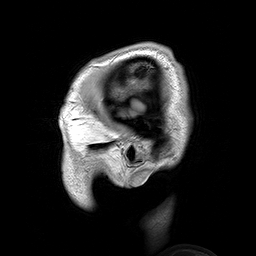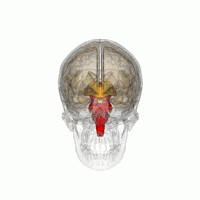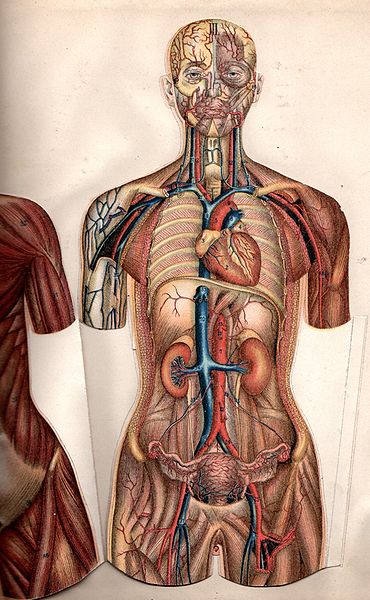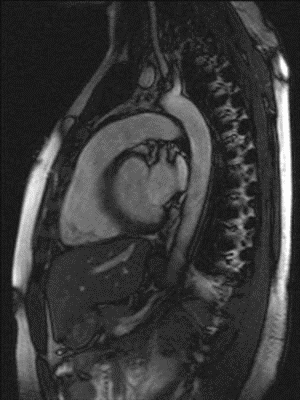If, like me, you are interested in the biological dimensions of cognition, consciousness, and phenomenology, you tend to study the cortex. Attention, decision-making, having a sense of self, perception, visual awareness, and many other key higher mental processes are modeled with data from cortical measurements, and especially with recent neurodynamics and computational neuroscience, there are increasingly sophisticated theories about the underlying mechanisms. But the cortex possibly gets too much attention compared to the rest of the brain and body. This is partially because it indeed makes us human, but also for practical reasons, much of what we know about the brain comes from EEG research that with people is usually limited to scalp-based cortical signal acquisition. Dig a little deeper, say, when learning about emotions, and the student or scholar gets at least cursory introduction into the sub-cortical, emotion-regulating structures of the limbic system such as the hippocampus, thalamus, and hypothalamus. Our sense of salience, that things matter, our bodily sensations, our emotions and drives are associated especially with these sub-cortical structures. The study of how the brain processes emotions and bodily sensations has pointed some psychologists, neuroscientists, physicians, and philosophers in recent decades towards the idea of the experienced, phenomenologically lived body as the basis of consciousness and the self (or “self”). The growing sense for some of us about the limitations of traditional computationalist/cognitive theories has led to to the idea that mind and brain must be understood as “enactive“: via evolutionarily and environmentally situated, physiological, embodied processes that “bring forth an experienced world”. Whatever cognition is, more than a few of us cognitive scientists nowadays think of it as somehow based in temporally ongoing, fleshy, existentially meaningful conscious life, or phenomenology. The mechanics of embodied mind, and the embodied basis of phenomenology, are very poorly understood by cognitive neuroscience, psychology, and medicine. Only very recently has there been a revival of interest especially in how visceral body states get processed by the peripheral nervous system and subsequently transformed by the central nervous system. One could understand this as a subfield of neurophenomenology: how the brain and body enable “the bodily feelings I have now”, the experiential phenomenology of the internal body (if you have poked around this site you may have seen my own 2011 dissertation work was on this very subject). The rise of interest in embodied cognition has been hugely advanced through the work of the neurologist Antonio Damasio. This pioneer of embodied cognitive neuroscience has been focusing the attention of the psychology and cognitive neuroscience communities on the brainstem as the basis of consciousness. The brainstem is not the usual topic when scientists bravely try to model conscious aspects of cognition, and my sense is that in the public mind it tends to register mostly when someone famous has medical problems as a result of brainstem damage causing loss of core visceral regulatory processes, such as with the death of Michael Jackson. In Damasios’ account, it is not merely a bit player in the grand drama of how body produces consciousness, but plays a starring role. Damasio (2010) states in Self Comes to Mind:Constructing the Conscious Brain , “I believe that the mind is not made by the cerebral cortex alone. Its first manifestations arise in the brain stem . ” (p. 75).
Above is the brainstem, in red. It receives inputs from the spinal cord, called “afferents”, that deliver signals from sensory nerves distributed throughout the body. These sensory nerves are affected by the homeostatic and visceral states of organs, such as our heart beating, the fullness of our bladder, blood sugar levels, the gas exchange in our lungs, and so forth. How much of the time these nerve signals resulting from visceral processes enter into conscious is a murky business. Cognitive scientists and others researching consciousness have not particularly referenced interior body psychophysiology and internal body-sensation in most theories about consciousness, but the work of Damasio is changing that. In general, research on the perception of visceral states or “inner psychophysics” goes in and out of scientific fashion, according to Gyorgy Adam’s wonderful overview of many decades of research, Visceral Perception: Understanding Internal Cognition.
Below is an MRI of a beating heart and other visceral organs, with the spine visible. Afferent nerves “encode” information (or “information”) about the homeostatic and other dynamics of these systems, and send signals to the spinal cord and brain.
While the idea that the brainstem produces the first manifestations of consciousness may seem radical, Damasio cites experimental evidence that perception of visceral states is mediated by the brainstem’s nucleus of the solitary tract and the pons. This gives us a window into understanding interoception: the awareness of our visceral organs and internal body (though I think interoception also refers to unconscious signals from bodily organs affecting the brain and possibly influencing unconscious cognition). Building on generations of basic research on the neurophysiology of visceral perception, Damasio (2010) defines interoception as a “complex mapping of the interior sense” (p. 97). He emphasizes this occurs through an interoceptive network involving significant processing by the brainstem, which, unlike a mere relay, receives, processes and integrates afferents from the state of the visceral organs, and in turn projects to the thalamus. Through the work of Damasio, Bud Craig and others, we can model cognition as based in a central nervous system which filters and transforms signals from the lifegiving organs of the body. Building on their contributions, here is how I understand the neurophenomenology of visceral perception to work: our body organs are responding to existential life needs, our brainstem gets signals from the body organs and actively filters and transforms the signals, and in turn projects to the thalamus. Thalamo-cortical fibers then make synapses with neurons in the insula, cingulum, and somatosensory and orbitofrontal cortices, regions implicated in interoceptive activity and cognitive processes handling internal body information. These areas all contribute to both consciousness in the foundational sense Damasio is investigating, and also produces specific awareness of our emotions and of our interior bodily sensations, such as feeling hungry. What goes on at the final stage, when cortical regions take the transformed bodily signal from the brainstem and thalamo-cortical processing, and somehow produce changes in consciousness? That gets into very complicated territory, and nowadays some of our most progressive thinkers use ideas and mechanisms from physics, such as Walter Freeman’s work on cortical neurodynamics, or that of Varela and colleagues. As of 2013 the dynamical aspects of interoception do not seem to be on many people’s radar besides mine and maybe a few others. What does it all mean for theories about the mind? If we accept that thalamic relay nuclei, activated by processed bodily interoceptive inputs in the brainstem, engage in further processing, and subsequently synapse on to (probably) dynamically interactive interoceptive centers in the insula and orbitofrontal, sensory, and cingulated cortical regions, what do we then understand about consciousness and cognition? As far as I can tell, the heart of Damasio’s theory is that visceral and homeostatic body states are “mapped” on to the brain via the brainstem, and this mapping is what consciousness and the sense of self is “made of”. As we are organisms needing to engage in the right sort of behavior to survive, we depend on our sensory and visceral organs functioning appropriately. Our minds are thus built out of an evolutionarily developed machinery of life preservation. Put another way: the interior chemical milieu in our viscera affects nerve signals into the brainstem, and brainstem-mediated afferent signals tell our brain and mind about the state of our organs by projecting to the “gateway of the cortex”: the thalamus. A series of cortical regions process the thalamus gated body-signals, some of which are cognitively and phenomenologically processed by a person as more emotionally and behaviorally salient, such as signals associated with food and thirst, pain and sex, and fighting or fleeing. Damasio, never one to shy away from big ideas and bold claims, sums up the state of his thinking in a 2010 interview:
Feelings, especially the kind that I call primordial feelings, portray the state of the body in our own brain. They serve notice that there is life inside the organism and they inform the brain (and its mind, of course), of whether such life is in balance or not. That feeling is the foundation of the edifice we call conscious mind. When the machinery that builds that foundation is disrupted by disease, the whole edifice collapses. Imagine pulling out the ground floor of a high-rise building and you get the picture. That is, by the way, precisely what happens in certain cases of coma or vegetative state. Now, where in the brain is that “feel-making” machinery? It is located in the brain stem and it enjoys a privileged situation. It is part of the brain, of course, but it is so closely interconnected with the body that it is best seen as fused with the body. I suspect that one reason why our thoughts are felt comes from that obligatory fusion of body and brain at brain stem level.
Can we not agree, that this is a profound way of thinking about the human condition? Buy me a beer! 




I followed the link to the interview with Damasio. It ends with saying that conscious delibriating will somtimes help us counteract the unconscious parts of the brain. Reading that, the basic zen question comes to mind – who is consciously delibriating? It’s easy to picture a “Me” doing that, but then we’re back to the dreaded homonuclei. Can someone please tell me who has that self-control based on conscious mind? For now I’ll keep my position that there’s no one separate individual to that conscious delibriating required to abstain from the cookie, and that such a process is itself a product of the organisms dynamic interaction with the environment. But there is never anyone there to conciously control it i.e. there is no Self to control the process of a proposed Self-control.
Cheers,
Niklas